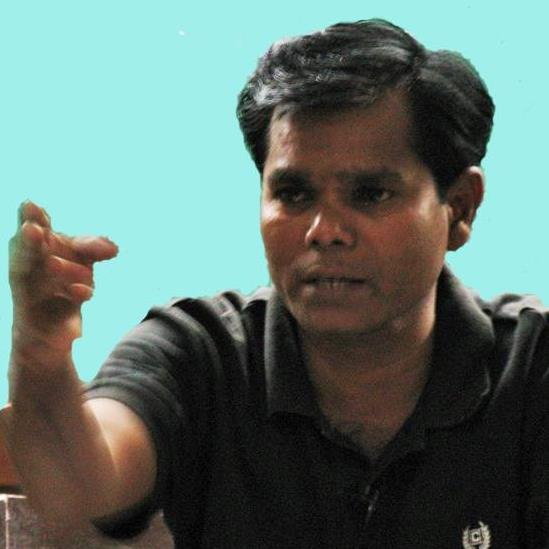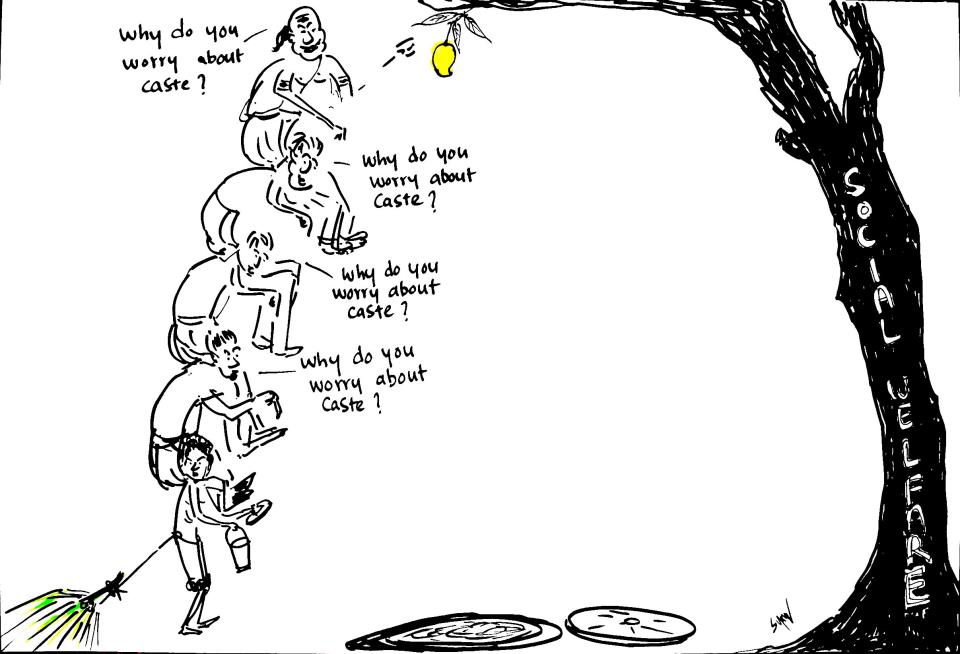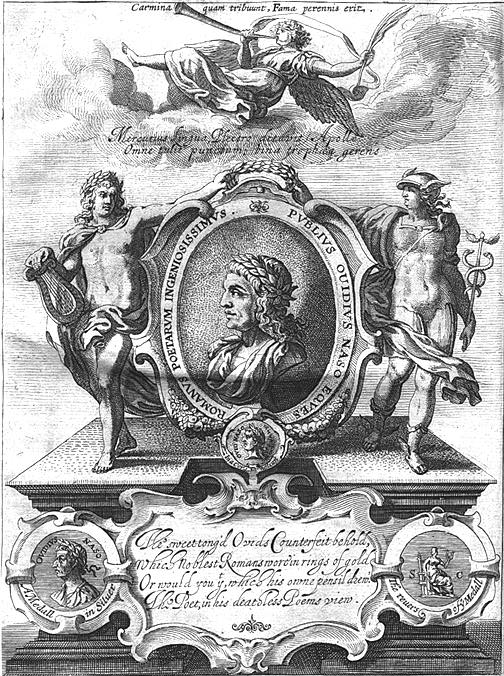Arvind Shesh
 Disclaimer: You perhaps watch a movie as just a film. You probably even look at society as if it were a film… But I watch a film as a society…and society as politics.
Disclaimer: You perhaps watch a movie as just a film. You probably even look at society as if it were a film… But I watch a film as a society…and society as politics.
Wasseypur is a ‘true’ story
Has the RSS instituted a new front comprising people from the film industry to launch Modi’s brand of Hindutva? The questions that the first part of Gangs of Wasseypur had left us with cannot merely be set aside by claiming that Anurag Kashyap just filmed a ‘real’ life story, or that films are a mere reflection of society or that they are meant for pure entertainment. Such bundles of contradictions have their own politics.
If it is about depicting ‘reality’, about reflecting society and providing entertainment, how is it that this movie further adds to the poison being spread against Muslims over the last couple of decades, in a calculated manner? How come it glorifies and glamorizes the violence and atrocities committed by the powerful castes which dominate our social structure? How come it further emboldens the psychology of hate against the lower castes and how come it reduces the woman again to her body and demeans her at every step? Which of these aspects of the film doesn’t strengthen the RSS’ agenda? Some people might offer an immediate defence saying a Muslim, whose name at several places is mentioned as Zeishan Qadri, has written the story. But one must bear in mind that his full name is Syed Zeishan Qadri.
I have already stated that I see a film as a society and society as political – then what is the society found in Gangs of Wasseypur, and through his film what kind of politics has Anurag Kashyap tried to put forth or provided a push for? This question wouldn’t have been as necessary had Anurag Kashyap not claimed that his film is based on true incidents from Wasseypur.
Chidambaram’s Azamgarh became Anurag Kashyap’s Wasseypur
To get an idea of this ‘real’ face of Wasseypur as seen from the eyes of Anurag Kashyap, one must refer to a certain part of a news report published on BBC which mentions an interview he gave in Patna. He is reported to have said, “the people of Wasseypur are criminals, deeply involved in illegal activities and are foot soldiers.” So, this is the ‘truth’ that emerges as the final outcome and conclusion of the deep ‘research’ of ‘real’ events by brand (Anurag) Kashyap. It doesn’t really matter if the people of Wasseypur were to call Anurag Kashyap a liar, or if they pleadingly held your hand and took you to their streets and mohallas to prove that see, we aren’t criminals! Please see how we also have scientists, engineers, doctors, IAS-IPS officers, businessmen and intellectuals, among others.
The family feud between Faheem Khan and Shabeer Khan to retain power, which had nothing to do with coal mining, never was nor is the face of Wasseypur. But all proofs and evidence of the facts will be declared false and fraud in the court of research of the filmmakers of Gangs of Wasseypur. Just as in the court of Chidambaram (then Union Home Minister), Azamgarh is the fortress of terror, in exactly a similar fashion, Wasseypur becomes a den of criminals in Anurag Kashyap’s court. Azamgarh, because of Muslims, is to be declared a fortress of terror and Wasseypur happens to have a population of about 90-95 per cent Muslims. So, what’s the difference (between the points of view of Home Minister Chidambaram and Anurag Kashyap)?
It is possible that all this is a mere coincidence. But will someone throw light on what image of Wasseypur emerges as a result of such claims by Anurag Kashyap and his ‘great’ observations regarding the people of Wasseypur?
One very simple general knowledge question: What is Wasseypur known for? What would now be the common answer? That “the people of Wasseypur are criminals, indulge in illegal acts and are foot soldiers?” Anurag Kashyap’s research on Wasseypur has dug it out historically, that is why those living in or hailing from there – those engineers, doctors, scientists, IAS-IPS officers and intellectuals- all now will be presumed to have actually obtained their certificates from some enemy Muslim nation and have returned to live and sabotage India from there.
The magical transformation of a Syed into a Qureshi
However, according to those who know Wasseypur or who live there, there was some bad blood between various powerful families, much like in other towns. Faheem Khan and Shabeer Khan were the gang leaders. The question that arises is: despite the film’s claims of authenticity, when the two gang leaders were ‘Khans’, how was one leader suddenly transformed into an Ehsan or Sultan Qureshi? In fact, the bigger question should be ‘Why’ the need for a Qureshi? (Is this the magic of the storywriter ‘Syed’ Zeishan Qadri or of Anurag Kashyap himself?)

The answer to this ‘why’ actually reveals the other trick of the filmmaker. From the beginning till the end, the characterization of Khans and Qureshis might prove useful to condition the viewers, but to understand the politics behind this does not require much effort. Among Indian Muslims, the Khans i.e., the pathans, are considered savarnas and the Qureshis are pasmanda.
So in this ‘real’ story of Wasseypur, is the transformation of one of the Khans into a Qureshi unintentional? Anyone who has keenly observed the political climate of the 1990s would not find it difficult to understand the implications of this. Like how after the implementation of the Mandal Commission’s recommendations, various machinations- from Advani’s rath yatra to the actions of the entire state apparatus- were underway to ‘fix’ all the ‘disturbed’ social and psychological symbols and images. All of which is still going on in different ways. Anurag Kashyap’s story of Wasseypur is actually a continuation of that.
In any case, these are times when criminals, thieves and other miscreants are presented to us as role models and heroes. Those days are gone when a Gabbar Singh managed to become a synonym of terror and hate without much use of profane language. Though, even recently, Paan Singh Tomar gave a tight slap to such profanity loving feudal minds.
The movie doesn’t need much decoding. On one side we have Sardar Khan, his father, and attached to his gang all the local hooligans and criminals who are heroes in the eyes of the audience, who evoke ‘positive’ feelings of sympathy etc. One the other side is Ehsan or Sultan Qureshi and their associates, who are experts at butchering cows or buffaloes, who ‘cheat’ their masters, are easily bought over, or rather one should say they ‘sell out’ easily. They are so full of hate that they even betray the accord that was brought about through a marriage which took place after the request of Sardar Khan’s son. They brutally chop human bodies into pieces in their slaughterhouse and even riddle the ‘hero’ of Wasseypur with bullets in the end. Basically, they evoke disgust for themselves through each and every action of theirs. In effect, the hero is a Khan, and the villain a Qureshi. What else could one have expected?!
So this is Kashyap’s stereotyping of Khans and Qureshis. Whereas I have already mentioned that both the criminal gangs of Wasseypur were led by Khans, but when Anurag Kashyap says this is the true story of Wasseypur then what is that truth he is talking about?
First, to call a town with over 90 per cent Muslims as criminal and foot soldiers at a time when Hindutva nationalism is at its peak. Second, in the portrayal of Khans and Qureshis, to glorify the pathans at each step while at the same time to portray the Qureshis as worthy of disgust. Was all that unintentional? If that is the case then it is more dangerous, for this is how the structure reproduces itself by devising new tools to maintain the status quo. And if this were done intentionally then this is a disguised manner of furthering the RSS agenda. Which means to promote hatred against Muslims, while at the same time portray the so-called ‘upper’ caste of Khans as heroes and to present the Qureshis as always soaked in blood, villains, traitors. So in effect, if a criminal or miscreant is from an upper caste then he is ‘inspiring’ and worthy of sympathy, but if he happens to be from a caste that is deemed low, then he is despicable. Like the following quote from Ramcharitmanas:
pujiye vipra sheel gun heena…shudra na gun gan gyan pravina
(Venerable is a Brahmin even if cruel and devoid of all virtue, never a Shudra even if full of virtue and wisdom.)
From which location is Anurag Kashyap talking? Will he hide his face away from the reality or just deny it?
Please read the next part of the article here.
[Translated by Akshay Pathak and Gaurav Somwanshi]
Original post in Hindi can be read here.
~~~
Arvind Shesh, originally from Sitamarhi, Bihar, is Assistant Editor at Jansatta (Hindi daily) in Delhi.










